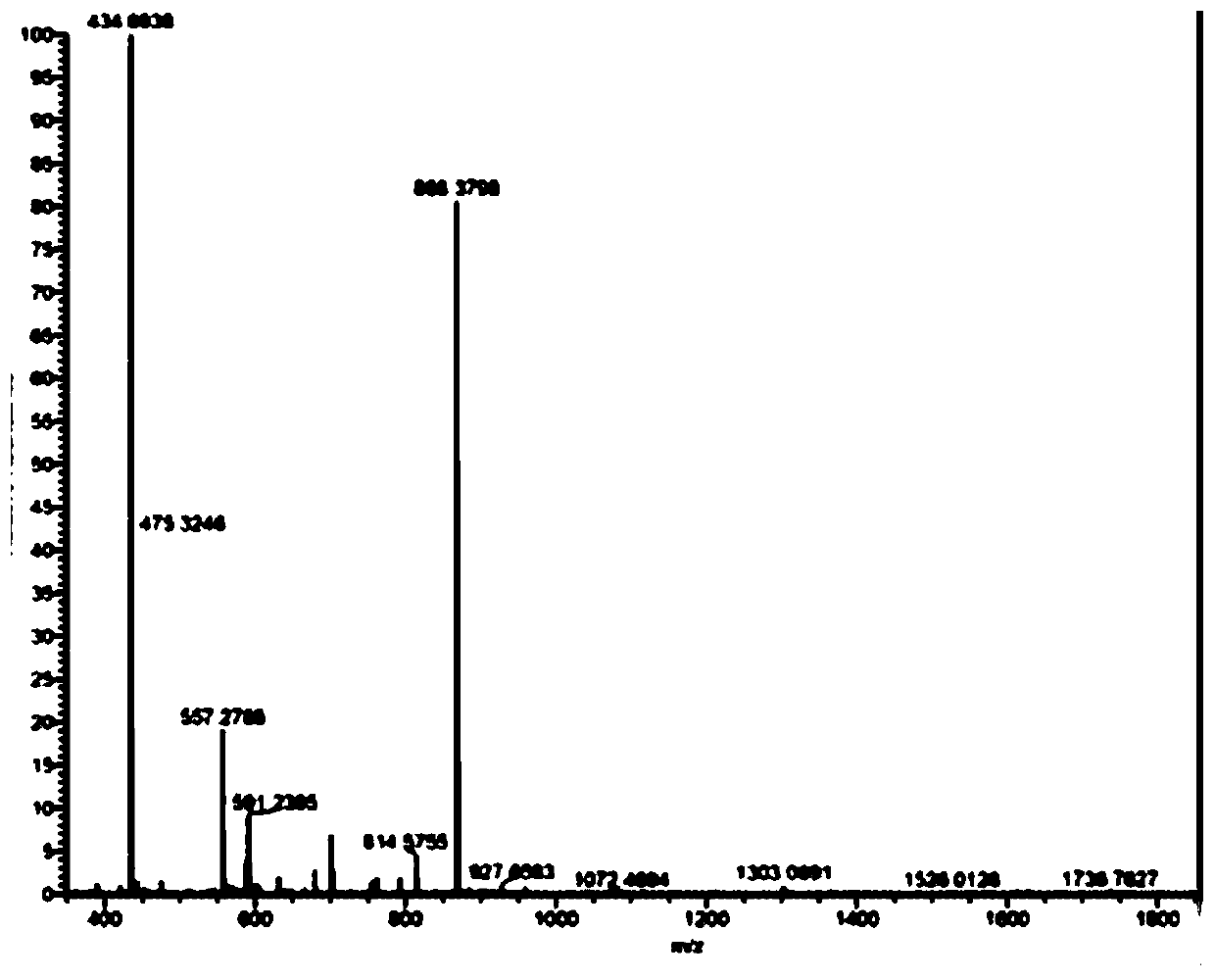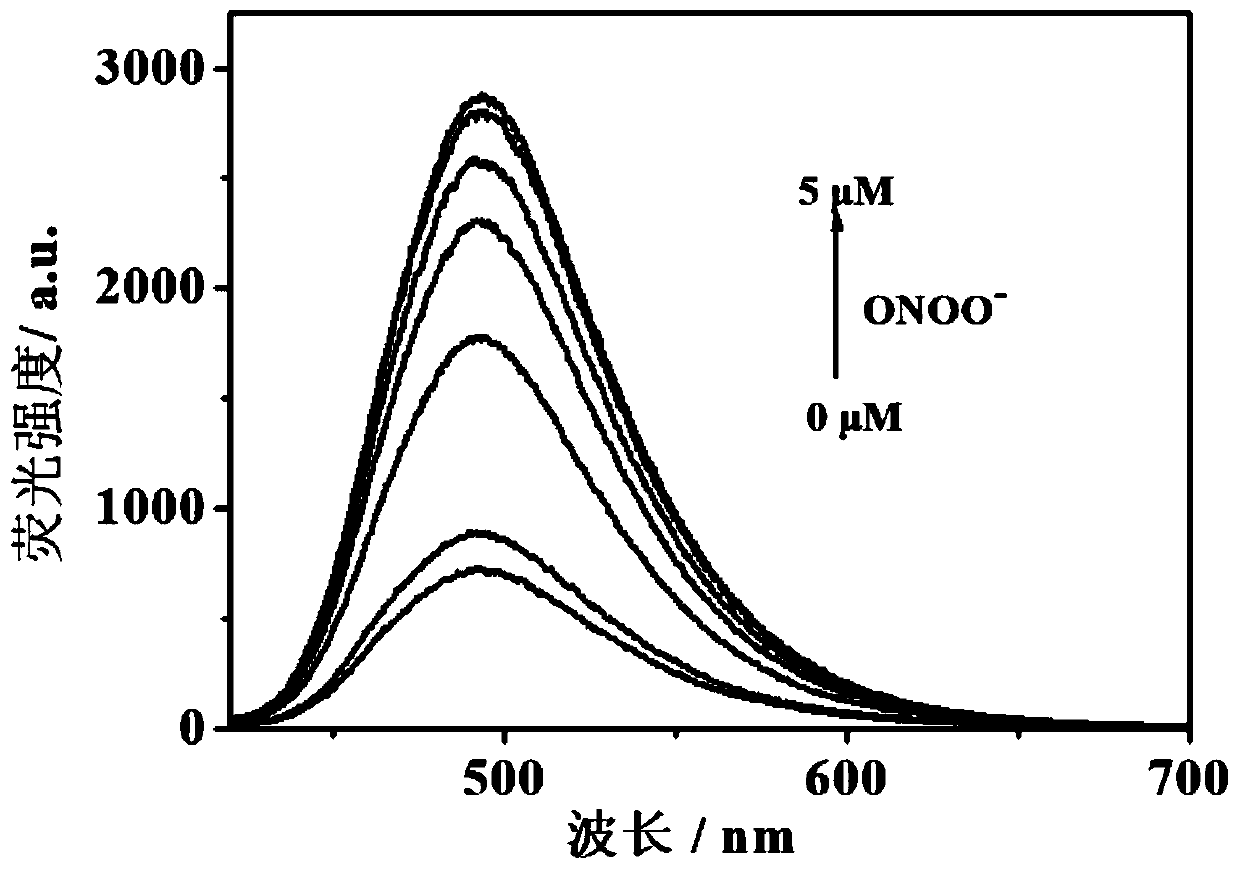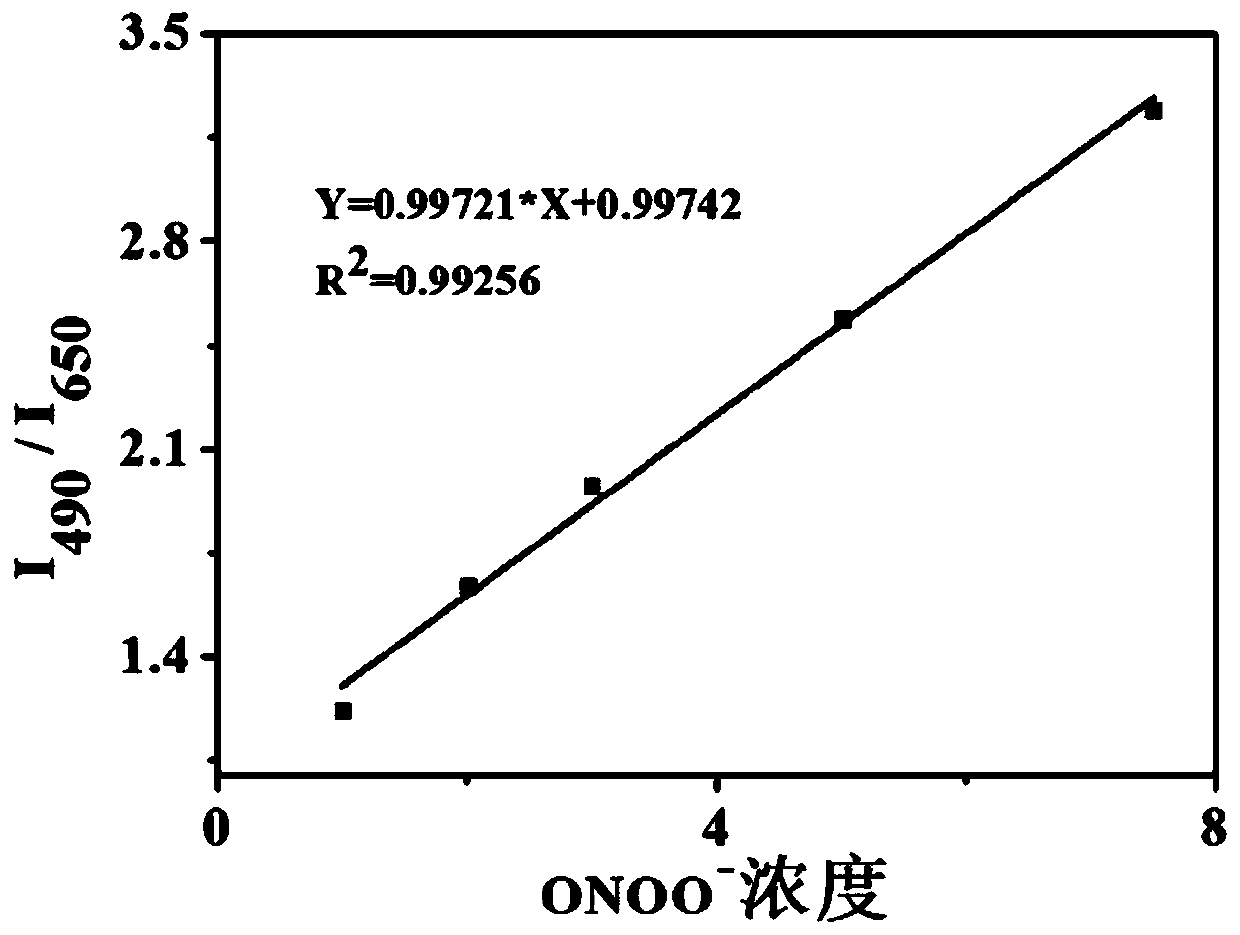Application of ratio type fluorescent probe in detection of peroxynitrite anions
A peroxynitroso, fluorescent probe technology, applied in the field of fluorescent probes, can solve the problems of low sensitivity and large background interference, and achieve the effects of high sensitivity, obvious phenomenon and high detection
- Summary
- Abstract
- Description
- Claims
- Application Information
AI Technical Summary
Problems solved by technology
Method used
Image
Examples
Embodiment 1
[0034] (1) Add 0.276 g of compound 1 (6-bromo-1H,3H-benzo[de]isotryptamine-1,3-dione) and 0.08 g of propargylamine into 20ml of ethanol, and react at 80°C for 12 Hours, TLC monitors the reaction process, after the reaction is over, the reaction solution is rotated to remove the solvent, the solid is dissolved in dichloromethane, and the mixed solvent column chromatography of dichloromethane and methanol with a volume ratio of 5:1 is used for separation to obtain compound 2;
[0035](2) Dissolve 0.156 g of compound 2 and 0.078 g of N-(2-aminoethyl)morpholine in 8ml of ethylene glycol monomethyl ether, and react at 110°C for 12 hours. TLC monitors the reaction progress. Wash with dilute hydrochloric acid with a fraction of 10%, and extract the reaction liquid obtained after the reaction with dichloromethane to remove the water phase, then use rotary distillation to remove the solvent, use a small amount of dichloromethane to dissolve the solid, and use a volume ratio of 20:1. Dic...
Embodiment 2
[0042] Titration Experiment of Fluorescent Probe and Peroxynitrite Anion
[0043] In PBS buffer (pH=7.4), add the fluorescent probe with an initial concentration of 1 mM, so that the concentration of the fluorescent probe in the solution is 10 μM. Then, different amounts of peroxynitroso anions with an initial concentration of 1.00 mM were sequentially added, so that the concentrations of peroxynitroso anions in the solution were 0.5 μM, 1 μM, 2 μM, 3 μM, 4 μM, and 5 μM, respectively. The nitroso anion was used as a control, and it was allowed to stand still for 0.5h to fully react the peroxynitroso anion and the fluorescent probe.
[0044] Fluorescence spectra under different concentrations of peroxysubunit anions were tested with a fluorescence spectrometer. The excitation wavelengths of the fluorescence spectra were 420 nm and 580 nm, the emission wavelengths were 490 nm and 660 nm, and the detection wavelengths were 490 nm and 660 nm. figure 2 As shown, as the concentrat...
Embodiment 3
[0047] (1) MTT detection of cell viability by fluorescent probe
[0048] HeLa cells were cultured in a 37°C incubator for 24 hours, then they were cultured into 96-well plates and incubated with different concentrations of probes for 12 hours. 10 μL of MTT was subsequently added to each well of the plate and further incubated for 4 h before the addition of DMSO (100 μL). The number of cells in each well was measured using a Herm Fisher Scientific plate reader. Cytotoxic structures such as Figure 4 As shown, therefore, the fluorescent probes in this patent are low toxic to cells.
[0049] (2) Selectivity test of fluorescent probes for detection of peroxynitrite anion
[0050] Under the same test conditions, add excessive amounts of other bioactive small molecules to the solution, and test the fluorescence spectrum after adding different bioactive small molecules, the results are as follows: Figure 5 shown. Depend on Figure 5 It can be seen that from 1-14 represent the ...
PUM
 Login to View More
Login to View More Abstract
Description
Claims
Application Information
 Login to View More
Login to View More - R&D
- Intellectual Property
- Life Sciences
- Materials
- Tech Scout
- Unparalleled Data Quality
- Higher Quality Content
- 60% Fewer Hallucinations
Browse by: Latest US Patents, China's latest patents, Technical Efficacy Thesaurus, Application Domain, Technology Topic, Popular Technical Reports.
© 2025 PatSnap. All rights reserved.Legal|Privacy policy|Modern Slavery Act Transparency Statement|Sitemap|About US| Contact US: help@patsnap.com



